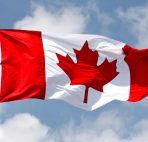MONTRÉAL, Oct. 3, 2016 – The Federal Government today announced its proposed pan-Canadian approach to pricing carbon pollution. Under the new plan, all Canadian jurisdictions will have carbon pricing in place by 2018.
Environment and Climate Change Minister Catherine McKenna made the announcement today at a meeting of the Canadian Council of Ministers of the Environment.
“Pricing pollution is one of the most efficient ways to reduce greenhouse gas emissions and to stimulate innovation. Already 80 percent of Canadians live in a province where there is pollution pricing. We want to continue this trend and cover the final 20 percent,” said the Minister.
In order to accomplish this, Canada will set a benchmark for pricing carbon emissions—set at a level that will help Canada meet its greenhouse gas emission targets, while providing greater certainty and predictability to Canadian businesses, noted the Minister.
Provinces and territories will have flexibility in deciding how they implement carbon pricing: they can put a direct price on carbon pollution or they can adopt a cap-and-trade system.
Pricing carbon pollution will give Canada an edge in building a clean-growth economy; it will make Canadian businesses more competitive; it will bring new and exciting job prospects for middle class Canadians; and it will reduce the pollution that threatens our clean air and oceans, noted the Minister.
Her words were echoed in Ottawa by Prime Minister Justin Trudeau who led off parliamentary debate on the Paris climate change agreement by declaring that provinces have two years to adopt a carbon pricing scheme, or the federal government will step in and impose a price.
“If neither price nor cap and trade is in place by 2018, the government of Canada will implement a price in that jurisdiction,” he said.
Quick Facts
- Provinces and territories will have flexibility in deciding how they implement carbon pricing: they can put a direct price on carbon pollution or they can adopt a cap-and-trade system.
- Pricing will be based on greenhouse gas emissions and applied to a common and broad set of sources to ensure effectiveness.
- The price on carbon pollution should start at a minimum of $10 per tonne in 2018 and rise by $10 a year to reach $50 per tonne in 2022.
- Provinces and territories choosing a cap-and-trade system will need to reduce the number of greenhouse gas emission permits they make available to businesses. The number of available pollution permits will decrease every year, based on both emission cuts through to 2022 (equal or greater to what would be achieved by a direct price) and a 2030 target equal or greater to Canada’s.
- The Government of Canada will provide a pricing system for provinces and territories that do not adopt one of the two systems by 2018.
- Revenues from carbon pricing will remain with provinces and territories of origin.
- Provinces and territories will use the revenues from this system as they see fit, whether it is to give it back to consumers, to support their workers and their families, to help vulnerable groups and communities in the North, or to support businesses that innovate and create good jobs for the future.
- The Government will work with the territories to address their specific challenges.
The overall approach will be reviewed in 2022 to ensure that it is effective and to confirm future price increases. The review will account for actions by other countries.
Provinces and territories have been early leaders in addressing climate change.
In a prepared statement the Federal Government said it will continue to work with provinces and territories to implement carbon pricing as a central component of the Pan-Canadian Framework on Clean Growth and Climate Change, noting it is one of the essentials tools Canada will put in place to reach or exceed its objective of reducing its emissions by 30 percent below 2005 levels.
“I have heard from Canadians from across our country, and their message is clear: climate change is one of the defining issues of this century and they expect their governments to lead the way and take action,” said Minister McKenna.
“To make sure the next 50 years are better than the last 50 years, we need to reduce our greenhouse gas emissions and transition to a low-carbon economy that works for everyone—especially the middle class and those working hard to join it,” she added.
Government of Canada proposes pan-Canadian pricing for carbon pollution

